Set on the Neris River, Lithuania’s picturesque capital is peppered with shrines, churches and baroque architecture. Broad Gediminas Avenue is the city’s most famous street, lined with municipal institutions, restaurants and cafés. Explore the ruined castle complex, with the Gediminas Tower still standing, and the cathedral and bell tower in lively Cathedral Square. You can take a balloon ride or join a free walking tour to get around the main sights and learn more about Vilnius’s fascinating history.
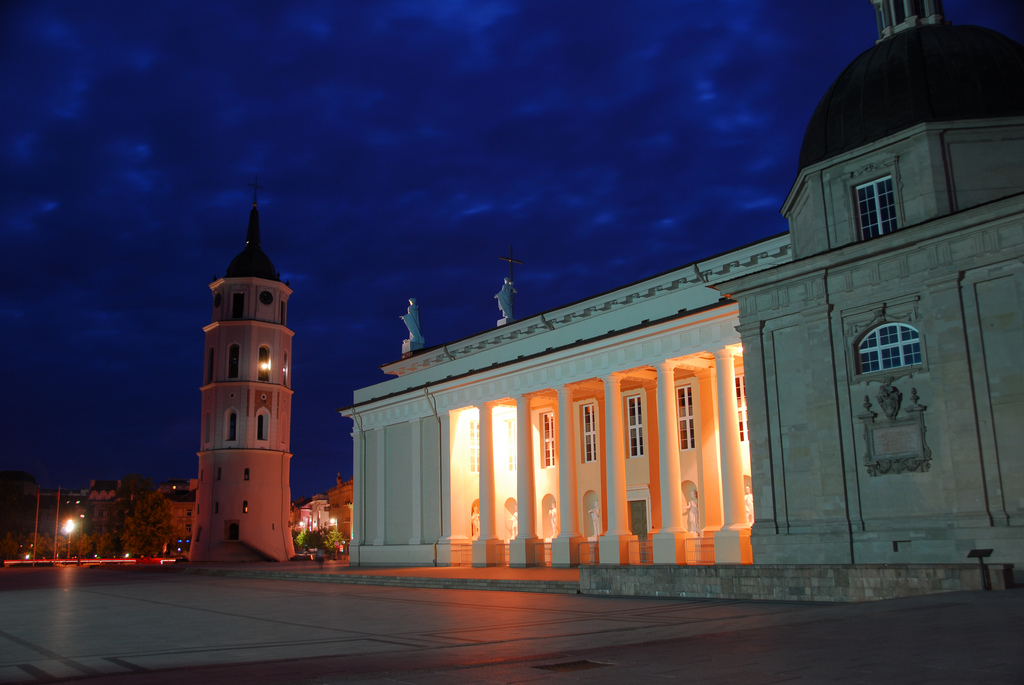
A historical building looms over a large public square in Vilnius (Photo: F Mira via Flickr / CC BY 2.0)
There are also several lovely green spaces to escape to, including Kalnu Park. Climb up to see the Hill of Three Crosses and take in the panoramic city views or enjoy one of the regular festivals and events held here. The Užupis district, a self-declared independent republic since 1997, shows a more bohemian side to the city, full of artists, creative studios and colourful graffiti.
Take a closer look at this bustling city with our suggestions for unique things to do in Vilnius.
1. Frank Zappa Memorial
During Soviet times, much of the music that was popular across democratic Europe and the world was banned in Lithuania. But with the fall of communism came a cultural liberation and suddenly bands that were previously outlawed were pumping out of teenage bedrooms, park stereos and music venues across the nation. With his iconoclastic image, American rock star Frank Zappa became a symbol of the freedom that people had for so long been denied and in 2001 a member of the Vilnius bohemian set founded the Frank Zappa Fan Club. Soon after, he commissioned a sculptor to create a bust of Zappa on a patch of land in the city centre. Such was the interest in the new edifice that a military brass band played famous Zappa hits at its unveiling and it remains a popular attraction to this day.
LOCATION K. Kalinausko g. 2B
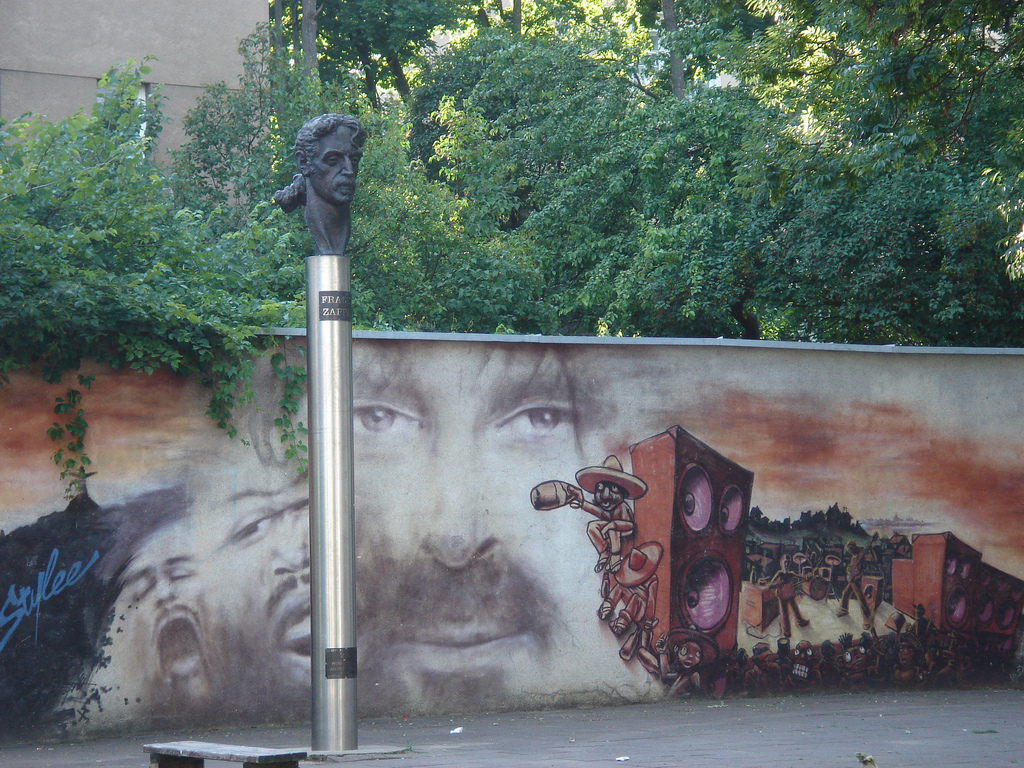
A bronze bust of Frank zappa atop a stainless-steel pole (Photo: richie78 via Flickr / CC BY 2.0)
2. Christopher Summer Festival
One of Lithuania’s largest, longest-running and most popular music festivals, dating back over two decades, The Christopher Summer Festival takes place over two month each year at a wide number of venues across Vilnius. The ethos behind the event revolves around “diversity”, both in terms of the music played and the audiences attending, hailing as they do from every social, cultural and ethnic group imaginable, with many travelling here from overseas for the occasion. Creative expression is let off the leash and performers are given a platform to simply get out there and play, unrestrained by convention or commercial imperatives. The result is a truly unique festival and one of the highlights of Vilnius’ cultural calendar. If you’re planning a trip here in summertime, this is a must-visit.
LOCATION Gedimino av. 26 DATES July 2 – August 27
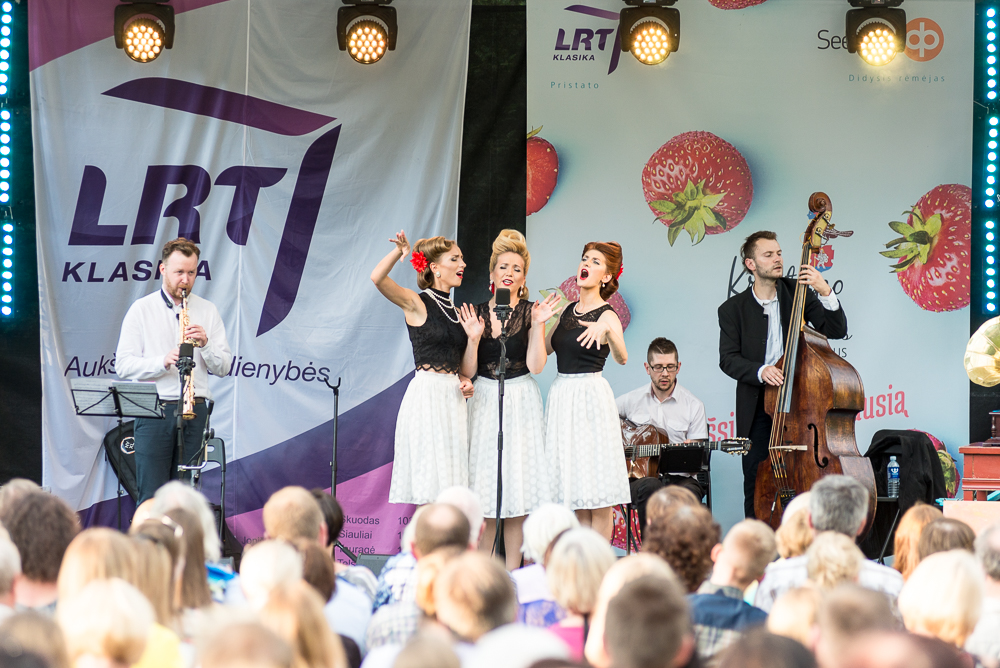
A musical stage performance during Christopher Summer Festival (Photo: Evgenia Levin)
3. Republic of Uzupis
Located in Vilnius’ Old Town, there is no more unique district anywhere in Lithuania than Uzupis. Frequented by artists, writers and other creative types since the fall of Communism, the district actually declared itself an independent republic in 1998, resulting in its “citizens” being furnished with their own flag and national anthem. Today tourists inevitably gravitate here, but in sufficiently small numbers for the area to retain all of its distinctive character and charm. The district also plays host to regular feasts, fireworks shows and open-air art exhibitions, so be sure to check local events schedules during your visit.
4. One Million Cent Pyramid
As the sun rose on Near Year’s Day 2015, the people of Lithuania woke to a new national currency, the euro. To mark the occasion, a quirky project was put forward that resulted in the construction of the world’s largest coin pyramid. The brainchild of two Lithuanian physics students, the pyramid featured a delicately balanced stack of over 1,000,000 disused coins from the country’s previous currency. Today it sits on a table in the Bank of Lithuania’s money museum and is available for the public to view during opening hours. But get in quick – the monument will come down one day, with all of its coins earmarked for children’s charities.
LOCATION Totoriu g. 2 / 8
5. Stebuklas Miracle Tile
Ask 100 people about the history of this unassuming concrete tile and you’re likely to get 100 different answers. But while its full back-story remains shrouded in mystery, there are some aspects that we do know. On August 23, 1989, a few months before the fall of the Berlin Wall, around two million people joined hands across Lithuania, Latvia, and Estonia to make the Baltic Way, the longest unbroken human chain in history, spanning over 370 miles. The chain began in Tallinn, Estonia and finally ended in Vilnius, right at the stebuklas tile in Cathedral Square. The Baltic Way made a powerful statement to their Soviet government, helping contribute to the restoration of each country’s freedom by 1991. Such is the potency of the tile’s historical significance that many believe it now has magical, wish-granting properties.
LOCATION Cathedral Square plaza, Vilnius Old Town
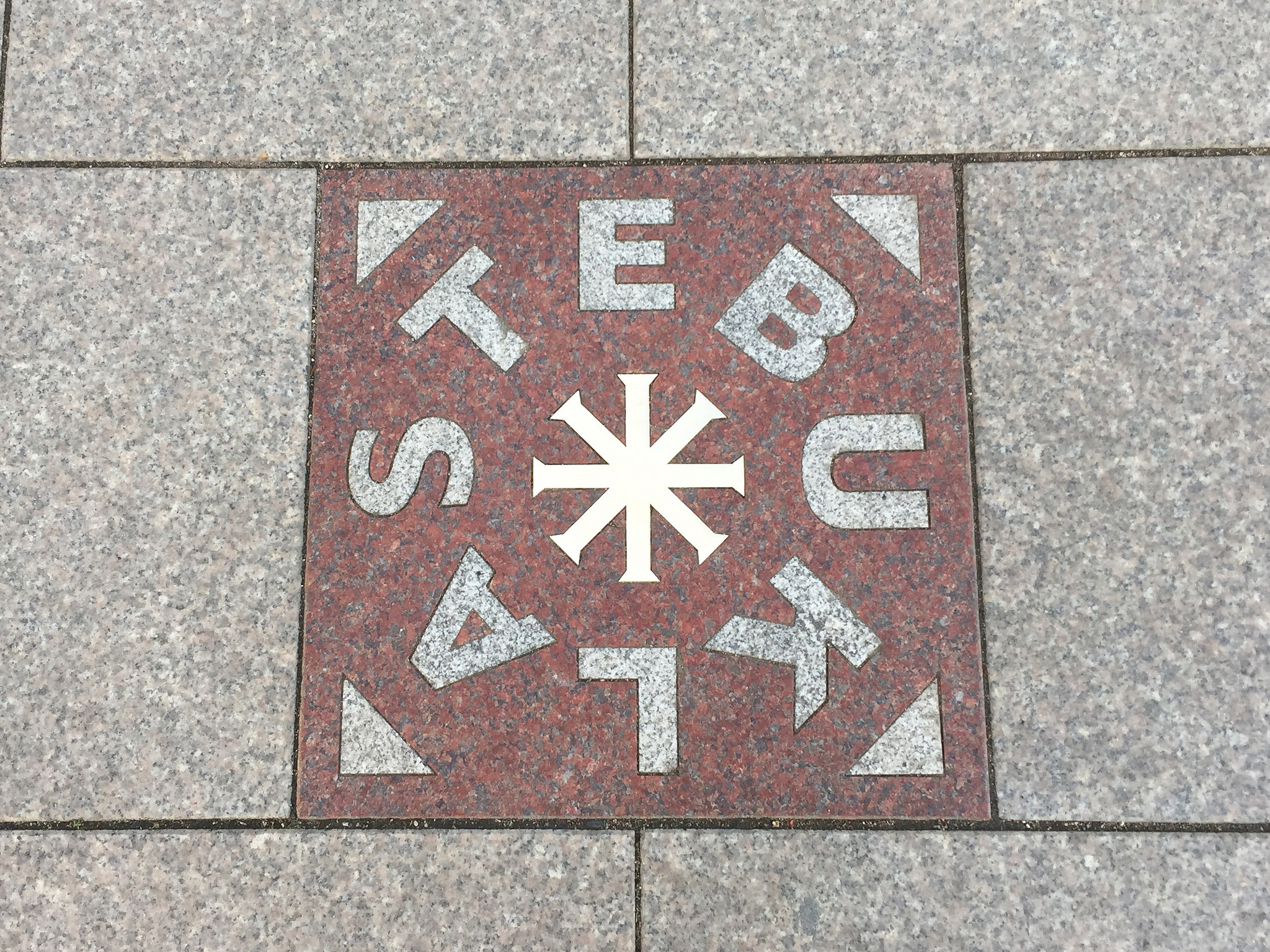
The shrouded-in-mystery Stebuklas Miracle Tile in Vilnius (Photo: rogix via Flickr / CC BY 2.0)
6. Kulgrindas
Tucked away underwater, away from the sight of prying eyes, the remnants of these stony roads date back centuries. They were originally built across swamps to be used for escape routes from foreign invaders, known only to locals and undetectable from the surface, providing a safe shortcut between villages and hill forts. Today visitors can come and admire these innovative structures that were built by bringing stones, wood, or gravel over frozen swamps during the winter, and letting them sink once the ice melted.
7. Museum of Genocide Victims
A dark and disturbing testimony to the events that still cast a shadow over the city. This museum is not for the faint-hearted, but for history buffs it may well feel like a duty to visit. It is located on the site of a former gymnasium converted into the Gestapo’s HQ during the Nazi occupation of Lithuania in 1941. After the Nazis left a few years later, it became re-occupied by Soviet Secret Police – better known as the KGB. During this period the building was used to house prisoners and to conduct executions and torture in its basement. Today its cells have been left virtually untouched, making it a true memorial to a past that many would rather forget – but that the wider world cannot allow to happen.
LOCATION Aukų g. 2A HOURS Wed-Sun 10am-6pm Closed Mon-Tue
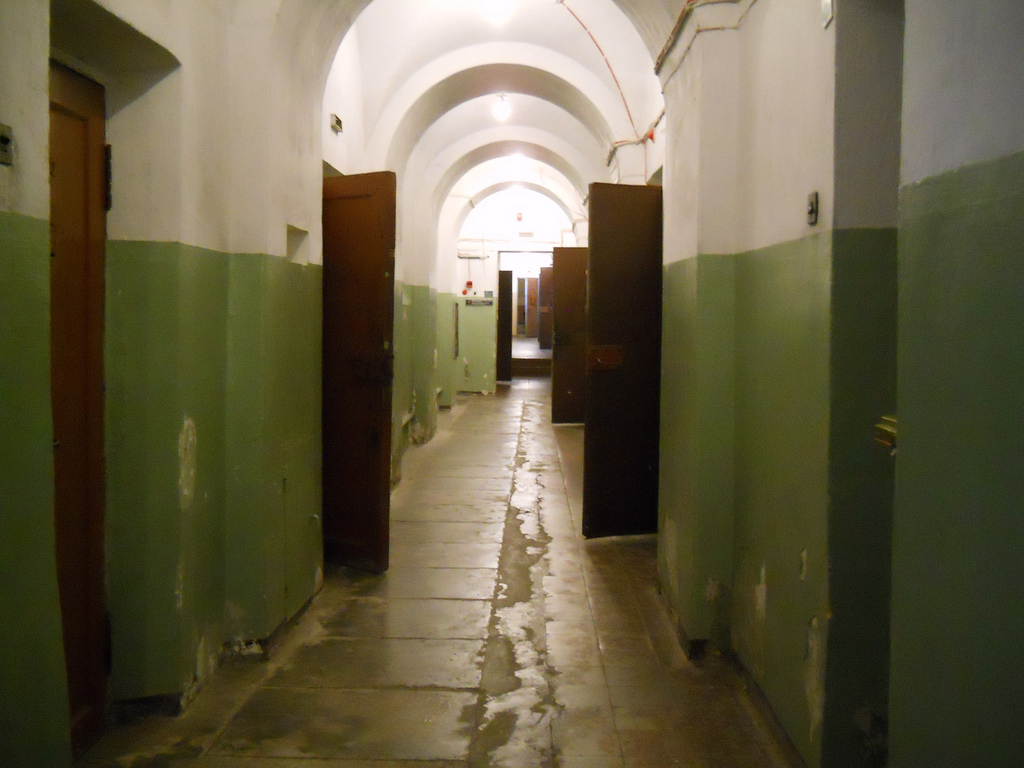
The eerie interior of the Museum of Genocide Victims in Vilnius (Photo: DAVID HOLT via Flickr / CC BY 2.0)
8. Amber Museum-Gallery
Founded in 1988, this unusual museum regales visitors with stories about the formation, colour, harvesting and processing of the ancient fossilised tree resin known as Baltic amber. You can follow amber’s history through a series of ancient rooms in the cellar, including one showcasing reconstructions of Juodkranė treasure and a baking shop from the end of the 15th century. Exhibitions of the works of artists working with amber are also regularly held here and visitors can buy amber jewellery in the on-site store. And for real aficionados, Amber polishing demonstrations are available upon request.
LOCATION Šv. Mykolo g. 8 HOURS Mon-Sun 9am-5pm 10am-7pm
9. Peronas
This is one of the city’s most popular –and quirky – drinking dens. Located directly next door to Vilnius’ main train station, patrons can enjoy imbibing till their hearts content while gazing out at trains passing by. As for the choice of statue by the entrance – Tony Soprano from the iconic TV drama The Sopranos – be sure to ask one of the bar staff during your visit. Cosy, spacious and the place to come for one of the best party’s in town, Peronas is a must-visit for any bona fide hedonist in Vilnius. And if you’re a committed train spotter too, all the better.
LOCATION Geležinkelio g. 6 HOURS Sun-Mon 5pm-1am Tue-Wed 5pm-2am Thur-Sat 5pm-4am
10. Smiling Angels
When the first Smiling Angel statue was erected in Vilnius in 2004 as part of the city’s efforts to become the European Capital of Culture, few would have guessed that it would become a recurrent symbol across the city. And yet today there are over 70 of these cherubic looking figures at various locations around town. Each one is created by renowned local sculptor Vaidotas Ramoška and each is also ‘mobile’. In other words they can be carried anywhere at any time. As a result, you can never quite be sure where you’ll see one – but you can have plenty of fun guessing!

One of the distinctive Smiling Angel statues that are dotted around Vilnius (Photo: Mark via Flickr / CC BY 2.0)
11. Downtown Forest Hostel & Camping
Situated on the foot of a hill, a few minutes’ walk from the Bohemian district of Uzupis in the city centre, this is one of Vilnius’ most unique accommodation options. Designed for nature and outdoors enthusiasts, guests can expect grill and barbecue events, mulled wine, craft beers and night-time bonfires – all of which combine to create a magical ambience. The site is surrounded by a vast garden and is also close to St. Anne’s Church and the Vilnele River, meaning there’s plenty of things to see and do during your stay. The Old Town is also 10 minutes away by foot.
12. Literatu Street
Way back in the 19th century the majority of Vilnius’ bookstores and antiquary shops could be found in a small street in the heart of the Old Town. Today, Literatu Street is home to a wall commemorating this heritage, featuring over 200 wooden, ceramic, glass or metal tiles engraved with the names of some of Lithuania’s most famous literary names. Originally intended as a temporary exhibition when it was launched in 2008, the wall quickly grew in popularity and it was soon decided that it would remain, becoming a popular stop-off point for both locals and visitors to the city.
LOCATION Vilnius Old Town
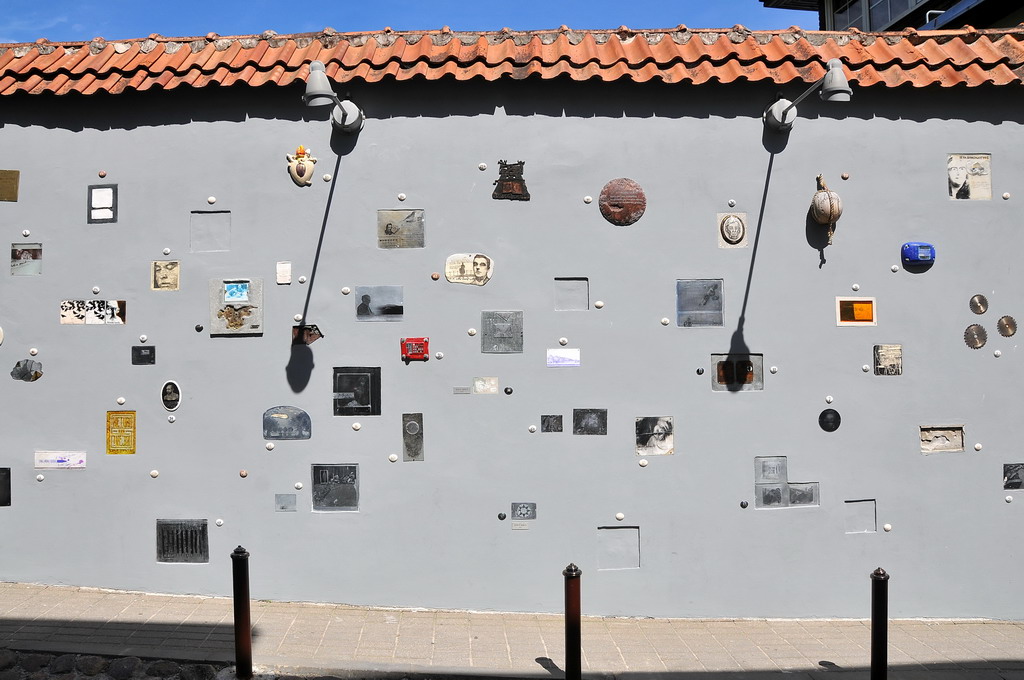
Artworks mounted on a wall in Literatu Street (Photo: FaceMePLS via Flickr / CC BY 2.0)